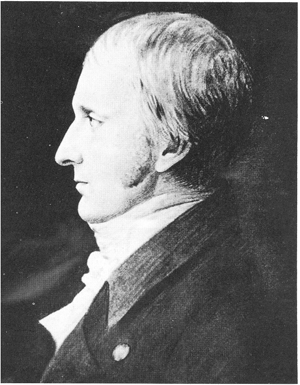
Thomas Wedgwood (1771-1805)
On May 14, 1771, early experimenter in the field of photography Thomas Wedgwood was born. He is the first person known to have thought of creating impermanent pictures by capturing camera images on material coated with a light-sensitive chemical. His practical experiments yielded only shadow image photograms that were not light-fast, but his conceptual breakthrough and partial success have led some historians to call him “the first photographer”.
Thomas Wedgwood – Early Years
Thomas Wedgwood was born in Etruria, Staffordshire, UK, as the son of Josiah Wedgwood, a family of pottery manufacturers. It is believed that he spent much of his life with painters, sculptors, and poets, to whom he was able to be a patron after he inherited his father’s wealth in 1795.[4] The young Wedgwood became interested in methods of child education. He soon concluded that most of the information that young brains absorbed came through the eyes, and were thus related to light and images.
Capturing Images with Light
Thomas Wedgwood is also the first known person to has used light-sensitive chemicals to capture silhouette images on durable media such as paper, and the first known to have attempted to photograph the image formed in a camera obscura. However, the date of his first experiments in photography is unknown. But it is believed that he indirectly advised James Watt on the practical details prior to 1800.[5]
It is assumed that Wedgwood was advised by Alexander Chisholm and members of the Lunar Society during his chemistry experiments with paper and white leather coated with silver nitrate. However, Wedgwood’s primary objective was to capture real-world scenes with a camera obscura, but those attempts were unsuccessful. However, he indeed succeeded in using exposure to direct sunlight to capture silhouette images of objects in contact with the treated surface, as well as the shadow images cast by sunlight passing through paintings on glass. In both cases, the sunlit areas rapidly darkened while the areas in shadow did not.
In Bristol, Wedgwood met Humphry Davy.[6] Davy wrote up his friend’s work for publication in London’s Journal of the Royal Institution, entitled “An Account of a Method of Copying Paintings upon Glass, and of Making Profiles, by the Agency of Light upon Nitrate of Silver. Invented by T. Wedgwood, Esq.” Even though Wedgwood and the published work influenced and inspired many future photographers, the experimenter himself was unable to “fix” his pictures to make them immune to the further effects of light.
But Unable to Fix it
Wedgwood was unable to “fix” his pictures to make them immune to the further effects of light. Unless kept in complete darkness, they would slowly but surely darken all over, eventually destroying the image. As Humphrey Davy put it in his paper of 1802, the picture, immediately after being taken, must be kept in some obscure place. It may indeed be examined in the shade, but in this case the exposure should be only for a few minutes; by the light of candles and lamps, as commonly employed, it is not sensibly affected. Although unfixed, photographs such as Wedgwood made can be preserved indefinitely by storing them in total darkness and protecting them from the harmful effects of prolonged open exposure to the air—for example, by keeping them tightly pressed between the pages of a larger book.
In imperfect health as a child and a chronic invalid as an adult, Thomas Wegdwood died in the county of Dorset at the age of only 34.
History of Photography with Thomas Alleman, [9]
References and Further Reading:
- [1] Tom Wedgwood, the first photographer; an account of his life, his discovery and his friendship with Samuel Taylor Coleridge, including the letters of Coleridge to the Wedgwoods and an examination of accounts of alleged earlier photographic discoveries, by Litchfield, Richard Buckley, 1903
- [2] Thomas Wedgwood at The Wedgwood Museum
- [3] The Invention of Photography: The Wedgwoods Part One and Two at art history unstuffed
- [4] Josiah Wedgwood and his Pottery Company, SciHi Blog
- [5] James Watt and the Steam Age Revolution, SciHi Blog
- [6] Humphry Davy and the Electrolysis, SciHi Blog
- [7] Thomas Wegdwood at Wikidata
- [8] Gregory, R.L. (2005). “Accentuating the negative: Tom Wedgwood (1771 – 1805), photography and perception”. Perception 34 (5), pages 513–520.
- [9] History of Photography with Thomas Alleman, Los Angeles Center of Photography @ youtube
- [10] Timeline of pioneers of photography, born before 1790






Pingback: A BRIEF HISTORY OF PHOTOGRAPHY BY OBJECTS – 3 – Chalk Drawing Circa 1800 - Canny Cameras